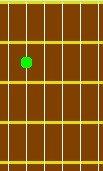Tom
Administrator
- Joined
- Jan 13, 2005
- Posts
- 51,896
I finally got to the point of being able to switch between my ukes and the plectrum banjo without too much mind bending and missed chords. But, being up for another challenge ...
With a couple of hours to spare between appointments in different cities, I visited my favorite music store in Lafayette today. Browsing through their huge ukulele lineup, I spotted a couple of baritone ukes. Unlike most ukes, they have two wound steel strings, and are tuned like the bottom four strings on a guitar. These instruments had a good tone and produced a 'fuller' sound than any of my other ukes, with the possible exception of my banjo uke.
I wrestled with the idea of re-learning the fingering, and decided to think about it. Went outside, sat in the car to cogitate and do some online research. Discovered that a capo placed at the 5th fret turns the baritone uke into a regular re-entrant tuned uke. Went back in the store and asked if they had a small capo, which they did. Played the baritone with the capo, and said "wrap it up".
The capo is only an interim solution (crutch) until I've developed sufficient muscle memory to play the baritone uke without it.
With a couple of hours to spare between appointments in different cities, I visited my favorite music store in Lafayette today. Browsing through their huge ukulele lineup, I spotted a couple of baritone ukes. Unlike most ukes, they have two wound steel strings, and are tuned like the bottom four strings on a guitar. These instruments had a good tone and produced a 'fuller' sound than any of my other ukes, with the possible exception of my banjo uke.
I wrestled with the idea of re-learning the fingering, and decided to think about it. Went outside, sat in the car to cogitate and do some online research. Discovered that a capo placed at the 5th fret turns the baritone uke into a regular re-entrant tuned uke. Went back in the store and asked if they had a small capo, which they did. Played the baritone with the capo, and said "wrap it up".
The capo is only an interim solution (crutch) until I've developed sufficient muscle memory to play the baritone uke without it.

